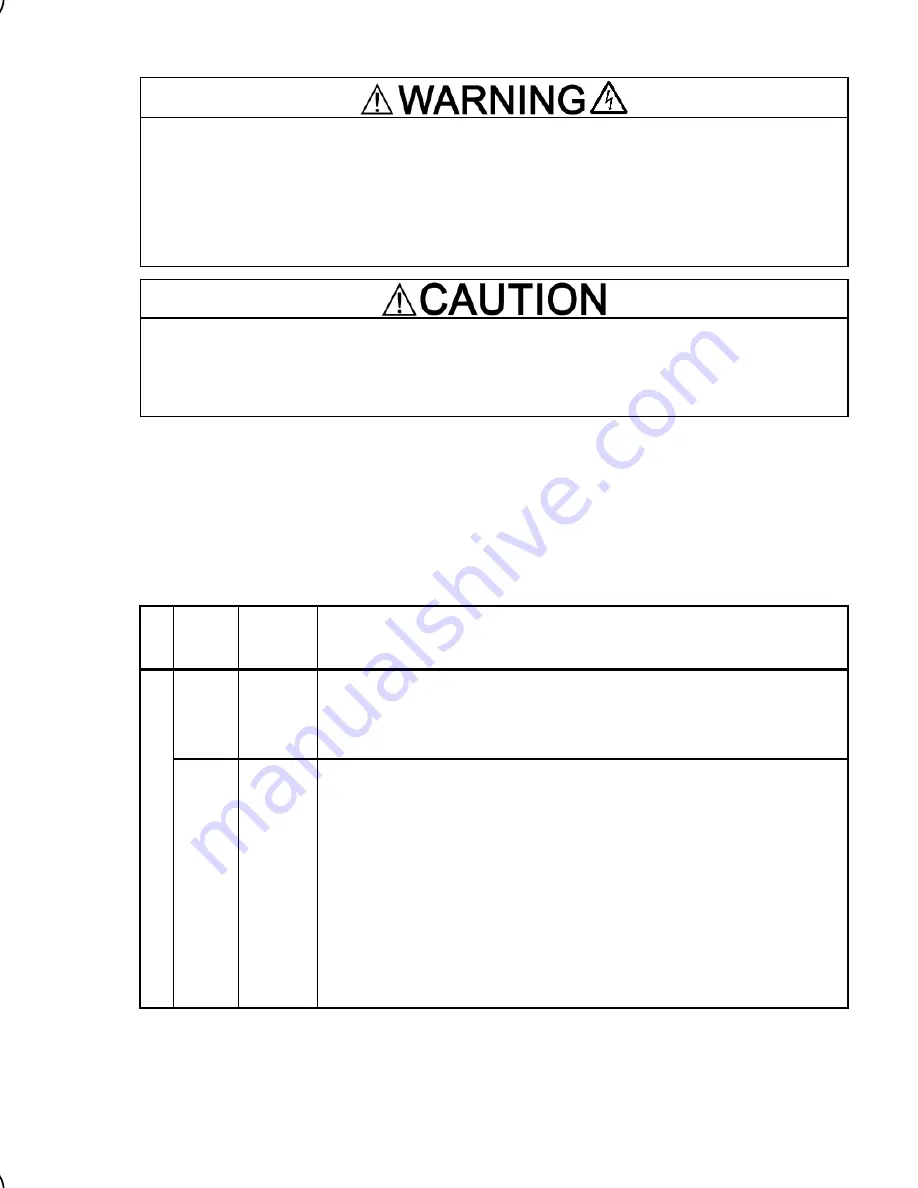
2-19
2.3.6 Wiring for control circuit terminals
In general, sheaths and covers of the control signal cables and wires are not specifically de-
signed to withstand a high electric field (i.e., reinforced insulation is not applied). Therefore, if a
control signal cable or wire comes into direct contact with a live conductor of the main circuit, the
insulation of the sheath or the cover might break down, which would expose the signal wire to a
high voltage of the main circuit. Make sure that the control signal cables and wires will not come
into contact with live conductors of the main circuit.
Failure to observe these precautions could cause electric shock and/or an accident.
Noise may be emitted from the inverter, motor and wires.
Implement appropriate measure to prevent the nearby sensors and devices from malfunctioning
due to such noise.
An accident could occur.
Table 2.8 lists the symbols, names and functions of the control circuit terminals. The wiring to the
control circuit terminals differs depending upon the setting of the function codes, which reflects the
use of the inverter.
Put back the main circuit terminal block cover and then connect wires to the control circuit terminals.
Route these wires correctly to reduce the influence of noise.
Table 2.8 Symbols, Names and Functions of the Control Circuit Terminals
Classif
i-
cation
Symbol
Name
Functions
Analog i
nput
[13]
Power
supply for
potenti-
ometer
Power supply (+10 VDC) for an external frequency command potentiometer
(Potentiometer: 1 to 5 k
)
A potentiometer of 1/2 W rating or more should be connected.
[12]
Analog
setting
voltage
input
(1) The frequency is commanded according to the external analog input
voltage.
0 to +10 (VDC)/0 to 100 (%) (Normal operation)
+10 to 0 (VDC)/0 to 100 (%) (Inverse operation)
(2) Used for reference signal (PID process command) or PID feedback
signal.
(3) Used as additional auxiliary setting for various main frequency com-
mands.
* Input impedance: 22 k
* The allowable maximum input is +15 VDC; however, the voltage higher
than +10 VDC is treated as +10 VDC.
















































